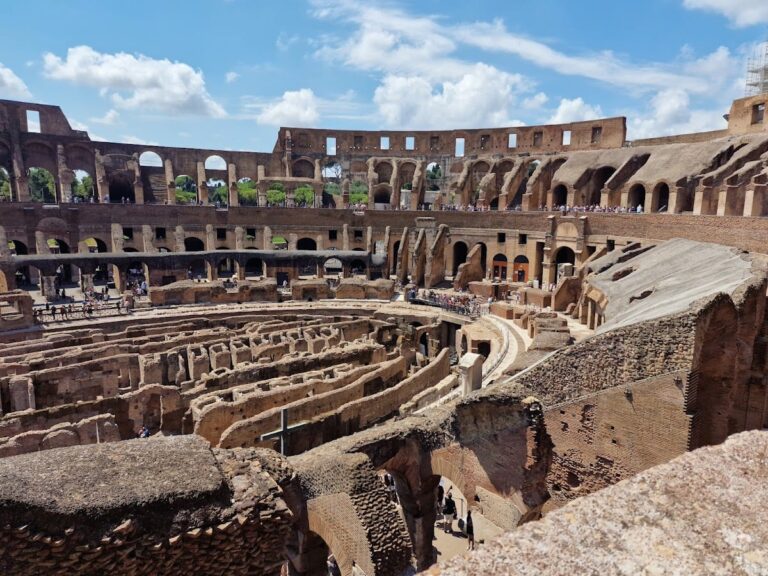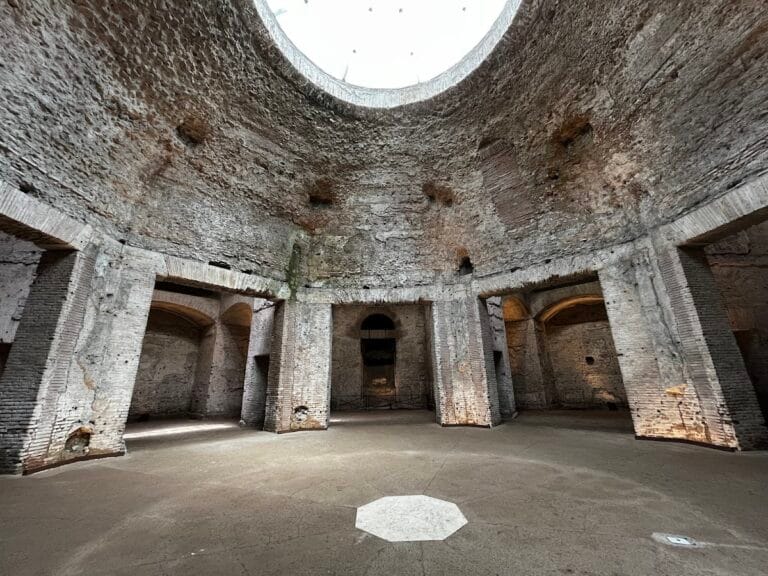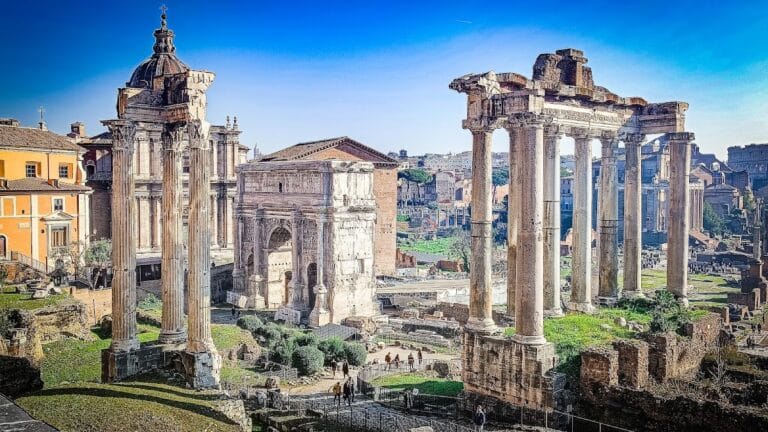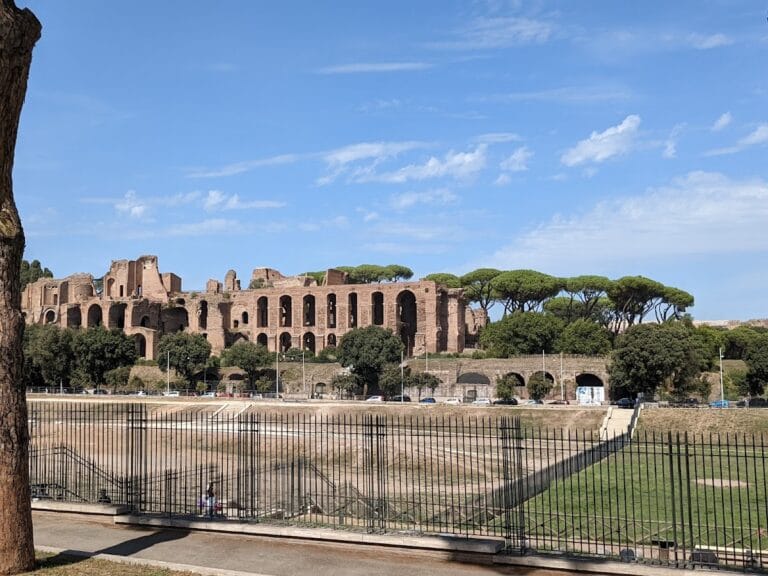Arch of Constantine: Rome’s Triumphal Monument Celebrating Emperor Constantine I
Visitor Information
Google Rating: 4.7
Popularity: Medium
Google Maps: View on Google Maps
Official Website: parcocolosseo.it
Country: Italy
Civilization: Roman
Remains: Civic
History
The Arch of Constantine stands in Rome, Italy, between the Palatine and Caelian Hills, spanning the Via Triumphalis. This route was traditionally used by victorious emperors entering the city. The arch was built by the Roman civilization and commissioned by the Roman Senate to honor Emperor Constantine I’s victory over Maxentius at the Battle of the Milvian Bridge on 28 October 312 AD.
Construction of the arch took place between 312 and 315 AD. It was officially dedicated on 25 July 315 during Constantine’s decennalia, marking ten years of his reign. The arch also celebrated the decennalia games, a series of events held every ten years in the Roman Empire, which included prayers and vows renewing spiritual and civic commitments. The inscription on the arch refers to Constantine’s victory and uses the phrase “instinctu divinitatis” (“inspired by the divine”), a deliberately ambiguous expression meant to appeal to both pagan and Christian audiences, reflecting Constantine’s complex religious position at the time.
Scholars debate the arch’s origins, with some suggesting it may have been begun under earlier emperors such as Hadrian, Maxentius, or even Domitian, and later reworked by Constantine. The arch’s design and sculptural elements incorporate reused pieces from monuments dedicated to Trajan, Hadrian, and Marcus Aurelius, with some heads re-carved to represent Constantine. This reuse served to link Constantine with previous respected emperors and to erase the memory of Maxentius, who was once seen as a major benefactor of Rome.
During the Middle Ages, the arch was incorporated into a family stronghold, adapting its structure for defensive purposes. Restoration efforts were first recorded in the 18th century. Archaeological excavations took place in the late 1990s ahead of the Great Jubilee of 2000. In modern times, the arch was used as the finish line for the marathon at the 1960 Summer Olympics held in Rome. In 2024, the arch suffered damage from a lightning strike, prompting further conservation concerns.
Remains
The Arch of Constantine is the largest surviving Roman triumphal arch, measuring about 21 meters high, 25.9 meters wide, and 7.4 meters deep. It has a three-bay design with a large central archway flanked by two smaller side arches. The structure is built of brick-faced concrete covered with marble, while the attic above the archways is made of brick and marble and contains the main dedicatory inscription.
The façade features four detached Corinthian columns made of Numidian yellow marble, known as giallo antico, standing on decorated plinths. One original column was removed and replaced by a white marble column. The arch extensively incorporates spolia, which are reused sculptural and architectural elements from earlier monuments honoring emperors Trajan, Hadrian, and Marcus Aurelius. Many heads on these reused sculptures were re-carved to depict Constantine.
The attic is decorated with eight large rectangular relief panels taken from a monument to Marcus Aurelius, showing scenes such as the emperor’s return to Rome, distribution of money, and military interrogations. Three additional panels are now housed in the Capitoline Museums. Large panels on the attic’s east and west sides depict scenes from Trajan’s Dacian Wars, originally part of a large frieze possibly from Trajan’s Forum or imperial barracks.
Above the lateral archways are eight large roundels, or tondi, from Hadrian’s era, about two meters in diameter. These show hunting and sacrificial scenes to various pagan gods and were reworked with Constantine’s portrait. The spandrels of the main archway feature reliefs of winged Victories holding trophies, while those of the smaller arches show river gods. The column bases and spandrel reliefs date to Constantine’s time.
A continuous horizontal frieze carved during Constantine’s reign runs above the lateral arches and around the monument. It illustrates key moments from Constantine’s Italian campaign against Maxentius, including departure from Milan, siege of Verona, the Battle of the Milvian Bridge, entry into Rome, a public speech in the Forum, and distribution of money to the people.
Inside the central archway are large panels depicting Trajan’s Dacian Wars. The lateral archways originally contained eight busts of emperors and deities, but most of these have been destroyed. The main attic inscription, originally in bronze letters, remains legible and praises Constantine’s victory, referring to the defeated enemy as “the tyrant” without naming him. Additional inscriptions over the smaller archways commemorate Constantine’s decennalia and express wishes for his twentieth year of reign.
The sculptural style of the arch contrasts the classical naturalism of earlier reliefs with more symbolic and stylized figures typical of late antique art. Figures have disproportionate heads, simplified drapery, and expressive gestures. The arch’s design closely follows that of the Arch of Septimius Severus, with three arches framed by detached columns on high plinths. Decorative elements include winged Victories, river gods, and personifications of the sun and moon on the short sides. The attic is accessible through a low entrance on the western side facing the Palatine Hill.










